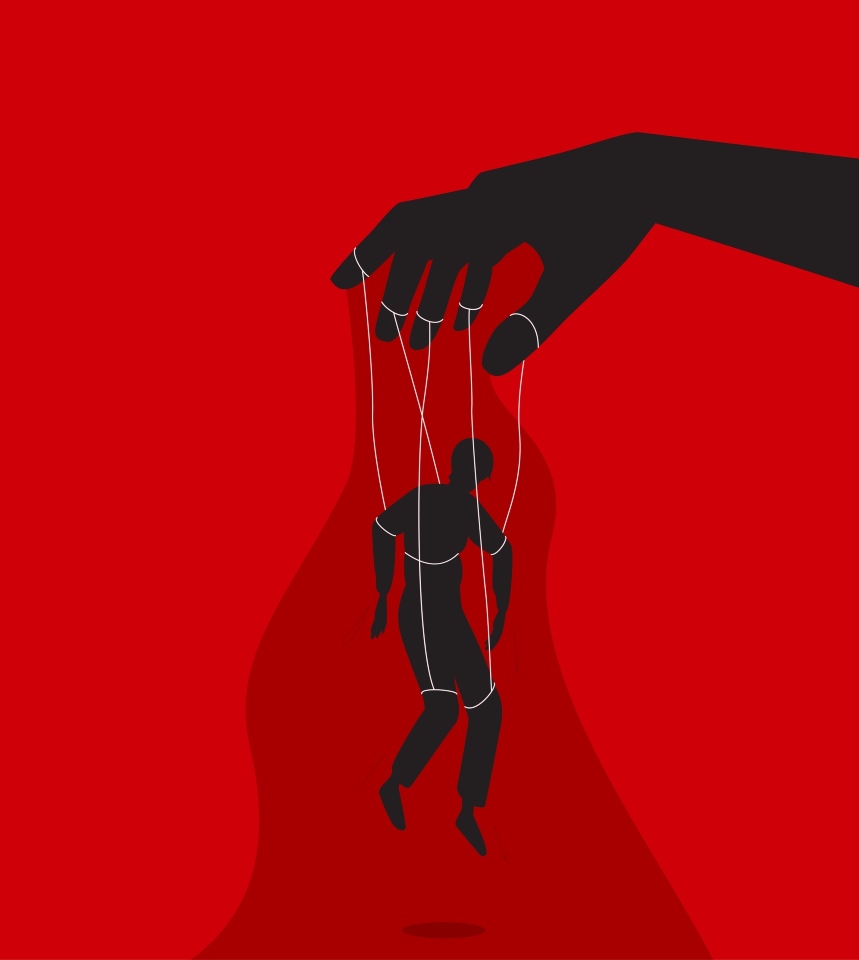Dinah Aitken and Sue Fletcher-Watson.
Think of a child in school experiencing sensory overload – maybe bright strip lighting, or the school bell, or a scratchy school jumper. It’s like a shake of the coke bottle. Then the timetable changes unexpectedly, and the child feels anxious and all at sea – another shake of the bottle. The child wants to be alone but they get paired up in an activity and they have to mask how they are feeling – the bottle shakes again. By the time the child gets home, the bottle erupts and the lid flies off.
Parents faced with this experience report their concerns to school, but are met with a stock response – ‘we don't see that behaviour here’. If the school’s understanding was shaped by a neurodiversity model, they might hear the parent in a different way, and start to think about what classroom adjustments could be made to relieve the child of the burden of coping. This burden may explain the higher rates of mental ill-health experienced by neurodivergent young people at school (Ford et al., 2021). Meanwhile, those who don’t ‘cope’ in this way – i.e. suppress and mask their experiences – may find themselves subject to bullying by peers (Fink et al., 2015), and exclusion by school staff (Aitken & Wang, 2021).
Despite being absolutely central to the delivery of inclusion in schools, neurodiversity as a term is widely misunderstood and misapplied. For example, many use the word ‘neurodiversity’ as a synonym for additional support needs (or equivalent) when actually neurodiversity includes everyone in a school. In fact, one of the powerful facets of neurodiversity is this inclusiveness, and resilience to the othering effects of terminology that separates us, like ‘special needs’.
One of the biggest risks, at a time when neurodiversity is becoming increasingly a part of the discourse around education (and employment too) is that it is perceived to be just the latest acceptable terminology: another burden for over-stretched teaching staff to wrestle with. Can we switch the narrative so that schools see the positive and practical benefits of embracing neurodiversity, not just for the pupils but for the whole school community? What does it really mean to foster, accept and support neurodiversity in a school?
What is neurodiversity?
Before we start, it is worth defining a few terms. Neurodiversity is a basic scientific truth: people vary in the way that their brains take in, process, and respond to information. This diversity of information processing gives rise to a diversity of experiences in the world (see Chapman, 2020). The presence of neurodiversity in the human race explains why it is that we are not all the same, and gives rise to the types of variation that are often labelled with a diagnosis – neurodiversity begets autism, ADHD, developmental language disorder, Down syndrome, dyslexia, dyspraxia, fragile x syndrome, and Tourette syndrome.
Using the terminology of neurodiversity, we can describe the biggest group of people as neurotypical. They tend to flourish fairly easily in our education system and beyond – because they are in the majority, these systems were often built by people like them, for people like them. Neurodivergent people (also referred to as neuro-atypical, or neuro-minorities) can struggle in these systems because of the mismatch between the way their brains process information and the way the system implicitly expects them to operate.
The single most common mistake made when writing or talking about neurodiversity is to describe an individual as neurodiverse. This is grammatically incorrect (diversity is a property of groups, not individuals), but also can be inadvertently discriminatory. As Nick Walker (2021) writes: ‘To describe an Autistic, dyslexic, or otherwise neurodivergent person as a “neurodiverse individual” … serves to reinforce an ableist mindset in which neurotypical people are seen as intrinsically separate from the rest of humanity, rather than as just another part of the spectrum of human neurodiversity.’
That said, it is essential to recognise and adopt the language preferences of individuals talking about themselves. While we refer to non-neurotypical people in this article as ‘neurodivergent’, many individuals might describe themselves as neurodiverse, or using other language altogether, and these preferences should always take precedent when referring to a specific person.
The neurodiversity paradigm and movement
Beyond these basic facts, neurodiversity has socio-political implications for education. These implications have largely been described by autistic scholars but are now embraced far more widely. The neurodiversity paradigm has three main components – all consequences of the basic fact of neurodiversity as applied to society.
First, variability between people in how they learn is natural, and indeed this variability is a collective strength for the human race. Second, there is no one better or correct way to be, and all neurotypes are equally valued. In the words of autistic scholar Jim Sinclair: ‘Grant me the dignity of meeting me on my own terms – recognize that we are all equally alien to each other and that my ways of being are not merely damaged versions of yours.’ Third, neurodiversity, just like other dimensions of diversity such as ethnicity, gender or sexuality, is something that needs to be understood in the context of social and interpersonal dynamics. In other words, the lives of neurodivergent people are heavily dictated by the reactions of others; by stigma, prejudice, discrimination and ignorance. The neurodiversity movement is a catch-all term that refers to any efforts to apply these ideas in policy and practice, just as the feminist movement aims to apply and realise the concept of gender equality.
Becoming neurodiversity-affirmative
As we can see, neurodiversity starts as a simple idea but immediately poses some radical shifts in thinking. What would this look like when applied in a school context?
Successful, inclusive education needs to cater to the naturally occurring variability that is an inevitable part of humanity. An expectation of varying needs and resources to accommodate those should be baked in to our school systems, rather than overlaid as optional extras. A simple example of this is for every classroom to have a cupboard of accessories freely available to help cater to varying needs: wobble cushions for hyperkinetic children to sit on and wiggle; noise-cancelling headphones for sound-sensitivity; stim toys to help induce focus; egg-timers to help structure independent learning time. Universal design can also help to create a neurodiversity informed environment. Classrooms should be fitted with dimmer switches as standard, and visual timetables should be posted up for the whole class, rather than being doled out to individuals with identified needs. Flexible seating arrangements – the option to stand or sit on a beanbag or yoga ball – are another example of the application of universal design.
A considerable added bonus of taking a universal design approach to classroom supports is that undiagnosed pupils can also benefit – a range of techniques and practical supports are suggested in Johnson and Rutherford (2019). For example:Schools that have provided tablets and laptops to the whole school benefit those children who struggle to spell and write, without singling them out.
Relaxing or scrapping school uniform policies supports pupils with sensory issues who cannot tolerate wearing the uniform.
Lots of schools no longer sound a bell between classes, which generates a calmer atmosphere for all.
Efforts to correct atypical development onto a more neurotypical pathway, or to encourage children to blend in, cannot be considered neurodiversity-informed. For example, many schools require a child to sign a 'behaviour contract' after a period of exclusion as a pre-condition for returning to school. This is an unacceptable approach for a neurodivergent child who isn't 'behaving' but is simply 'being'. Another common example of this in practice involves the teaching of “social skills” based on neurotypical norms to autistic children. Most egregiously, this is sometimes recommended as a solution when an autistic child is being bullied at school – a devastating neglect of duty of care to the autistic child, when the focus should clearly be on changing the behaviour of the bully. In moving away from a normative model of education support, it is important to permit variability in outcome as well as process. Children are not just following their own paths, they are headed to different destinations too. A child who is struggling with handwriting may not need more time to get it right – give them the option to get really good at typing instead.
Finally, the neurodiversity paradigm shows us that neurodivergent experiences cannot be fully understood by people from another neurotype, and thus we need to centre individual experiences and promote self-advocacy (see Pellicano & den Houting, 2022). Neurodivergent teachers and pupils themselves should be at the centre of any school’s inclusion process. Of course, this does not deny the crucial role that can be played by experts and allies who happen to be neurotypical. Especially for children, it may be hard to articulate what are the barriers they are experiencing, let alone identify possible solutions. Experienced professionals can support an individual to analyse their own needs and propose solutions that might be effective. Moreover, a large part of the experience of neurodivergent people consists of the environment created by the attitudes and actions of neurotypical people around them. Inclusion at school is everyone’s business. For example, in a scoping study (Friskney et al., 2019), it was found that schools’ ability to offer a positive learning experience for neurodivergent pupils was linked to ‘the schools’ abilities to respond to a diverse population in general’.
The LEANS Programme, Learning About Neurodiversity at School, is one way we have tried to address the attitudes and actions that shape neurodivergent pupils’ experiences.
Myths and risks
When the neurodiversity paradigm is not well understood, it can be mis-applied, resulting in a number of possible negative outcomes. One myth is that neurodiversity denies the disabling impacts of being neurodivergent. You may hear people say something like ‘neurodiversity means that autism is just a difference, not a disorder’. However, when we argue that something is a difference it can still also be a disability – especially within the social model of disability which focuses the cause of the disability in the environment, or the (lack of) environment-person fit. Applying the concept of neurodiversity in this way allows us to simultaneously reject ‘disorder’ labels, while allowing for the fact that those differences may indeed have disabling effects. Ultimately, the word difference should point us to acceptance of needs without judgement, rather than denial of needs without support.
Closely related to this mis-application of the concept of neurodiversity is the idea that we should be celebrating the talents of neurodivergent people. Now, you won’t find us arguing against identifying and lifting up people’s strengths. Working out what you are good at and using that to build skills and self-esteem is an amazing thing for a young person to experience, and a fantastic outcome for a teacher. The difficulty arises when the entire neurodiversity idea is boiled down to a focus on celebrating talents. Where does this leave children who don’t feel they have any talents? And who gets to define what counts as a talent? Is lining up all your coloured pencils perfectly, or never running out of energy, really going to be celebrated in the same way as ace-ing your maths test?
Instead, the focus on strengths is more healthy – and more aligned with the natural variability that is central to neurodiversity – when considered at a group level. Neurodiversity brings collective strength to the table, drawn from variability in experience, helping to drive innovation and empathy – two cardinal features of the evolution of humanity. In the classroom, a focus on collective strengths is apparent when the class celebrate their ability to get along together and their willingness to accommodate each other. As a teacher, one might celebrate the variety of ways in which pupils have approached a creative writing task – ‘look at all these amazing poems – everyone has approached the assignment in their own way!’ – rather than selecting the ‘best’ examples based on a set of metrics which not all will meet.
If the neurodiversity paradigm is not well understood, there is a risk that this transformative idea not only fails to meet its full potential, but that active harm ensues. Mis-appropriating the acceptance agenda of the neurodiversity movement could mean denial of support to those who need it – in a similar way that insistence on a ‘colourblind’ approach prevents anti-racist actions. Tokenistic adoption of neurodiversity language without follow-through in terms of ideas neuters the paradigm and prevents real change.
It is also worth noting that neurodiversity does mean different things to different people – not all readers will agree with the formulations we have adopted here. For example, attempts have been made to position learning disability outside the concept of neurodiversity. The question, we think, to ask yourself is ‘Does my idea of neurodiversity operate to combat stigma and enable flourishing for everyone?’ – if it doesn’t, maybe the simplest solution is to expand and update your idea of neurodiversity.
A neurodiversity-affirmative framework
When neurodiversity is used to include everyone, and to drive a radical agenda of acceptance, the benefits can be substantial. One problem in our current model of classroom support, which all too often relies on a diagnosis before support is offered, is that children may sit on clinical waiting lists for months before receiving a diagnosis. If their needs are not being met in this time, serious outcomes can ensue, including exclusion and mental ill-health. Neurodiversity reminds us of the variability that exists in every school, in every classroom. A neurodiversity-affirmative school provides a platform for teachers to analyse and act upon the apparent needs of the children in their class without waiting for external (often clinical) validation to do so. Such practice is truly child-centred, and permits a rapid response to the changing needs of pupils, while waiting for the insights that can come from a clinical evaluation.
Another benefit of adoption of a neurodiversity-affirmative approach is the shift in focus away from modification of a person against a norm, and towards cultivation of that individual on their own terms. The potential for damage to wellbeing that comes from approaches which focus on correction is clear. In worst case scenarios – and all too often in our experience – this can lead to mental health crises, exclusion or anxiety-related school non-attendance. In contrast, a focus on combating stigma associated with neurodivergence, and on flourishing, nurtures positive self-regard. This can only support engagement with education and maximise learning potential.
The challenge for teachers and schools
Hopefully, we have painted a picture of a neurodiversity-affirmative model for education. A neurodiverse class isn't a bunch of problems to be solved – instead, it's a rich community, brimming with individual and collective potential.
However, it would be unfair and perhaps enraging to suggest this is an easy utopia to create. It’s easy to worry that permitting – or rather, encouraging – children to self-advocate and offering support on a universal-design basis without clinical diagnosis would make your classroom into a free-for-all. Crucially though, we just don’t know much about what a classroom that really delivered on the principles of the neurodiversity paradigm would look like. How much of the difficult behaviour teachers struggle with in class right now is motivated by children trying to hide their difficulties, or push adults away because they don’t feel they can be trusted?
As well as for individual teachers, there is a challenge here for schools. A school is a complex community, and by its very nature it is systemic. The neurodiversity paradigm requires systemic change – we can't continually ask individuals to change themselves to fit in. Instead, we need to meet individuals nearer to where they are. This raises the crucial question of funding. While staff are underpaid and resources in short-supply, it will always be impossible to fully realise the vision of the neurodiversity-affirmative education for everyone. A key way to deliver on the promise of neurodiversity is to campaign for change and investment.
If you want to learn more about neurodiversity, how it applies in schools but also in your workplace or community, we encourage you to check out the It Takes All Kinds Of Minds conference, known as ITAKOM. This large, international, neurodiversity-focused event is happening in Edinburgh on 13-14 March 2023, though you can also attend as an online delegate wherever you are. There’s a huge amount of content to choose from, with five parallel streams, and about a quarter of the programme specifically addressing the education context. See the
programme, speaker and registration info.
A pathway to ambitions
A neurodiversity literate school can create an environment that affirms both the existence of neurodiversity and the tenets of the neurodiversity paradigm, to the benefit of pupils and staff. School staff who confidently understand neurodiversity can be empowered to respect their own expertise as educators in recognising the support needs of pupils in their class. Neurodiversity-affirmative classrooms will be characterised by universal design features and flexibility, with teachers adopting and iterating small changes with the potential to benefit everyone. Those same teachers will find ways to focus on the complementary contributions made by the range of people in the class, and shift away from a constant focus on individual achievement, measured against narrow standards. Pupils in such schools will become accomplished self-advocates, who understand their needs, and feel no shame in asking for help. These benefits will radiate out to family networks, as the constant battle for support for their child dissipates. Engagement with the neurodiversity paradigm thus provides a pathway to realise the long-held ambitions of inclusive education, fostering an environment where each pupil can thrive on their own terms.
Professor Sue Fletcher-Watson is Chair of Developmental Psychology and Director of the Salvesen Mindroom Research Centre, The University of Edinburgh.
Sue.Fletcher-Watson@ed.ac.ukDr Dinah Aitken is Head of Outreach at the Salvesen Mindroom Centre.
Further reading
Walker, N. (2021). Neuroqueer Heresies: Notes on the neurodiversity paradigm, Autistic empowerment, and postnormal possibilities. Autonomous Press
GTCS (2020).
Understanding neurodiversity in the context of equality and inclusive practice. A professional guide for teachers.
Hall, A., Meyer, A. and Rose, D. (2012). Universal Design for Learning in the Classroom NY. The Guildford Press.
References
Aitken, D. & Wang, L. (2021). Learning Difficulties and Exclusion from School. Salvesen Mindroom Research Briefing,number1.
Chapman, R. (2020). Defining neurodiversity for research and practice. In Neurodiversity Studies (pp. 218-220). Routledge.
Fink, E., Deighton, J., Humphrey, N., & Wolpert, M. (2015). Assessing the bullying and victimisation experiences of children with special educational needs in mainstream schools: Development and validation of the Bullying Behaviour and Experience Scale. Research in developmental disabilities, 36, 611-619.
Ford, T., John, A., & Gunnell, D. (2021). Mental health of children and young people during pandemic. British Medical Journal, 372.
Friskney, R., Tisdall, E.K.M. & Aitken, D. (2019). Communication matters: Three scoping studies about the experiences of children with learning difficulties, and their families, in Scotland. Salvesen Mindroom Centre and University of Edinburgh. Edinburgh.
Johnson, M. and Rutherford, L. (2019). An Autism Evidence Based Practice Toolkit for use with the SCERTS™ Assessment and Planning Framework.
Pellicano, E., & den Houting, J. (2022). Annual Research Review: Shifting from ‘normal science’to neurodiversity in autism science. Journal of Child Psychology and Psychiatry, 63(4), 381-396.
Sinclair, J. (2010). Being autistic together. Disability Studies Quarterly, 30(1).
Walker, N. (2021). Neuroqueer heresies: Notes on the neurodiversity paradigm, autistic empowerment, and postnormal possibilities. Autonomous Press.
SOURCE;




 «Η παιδική κακοποίηση δεν γνωρίζει σύνορα και ευδοκιμεί στο σκοτάδι», αναφέρει στην «Κ» ο κ. Λουτσιάνο Καλεστίνι.
«Η παιδική κακοποίηση δεν γνωρίζει σύνορα και ευδοκιμεί στο σκοτάδι», αναφέρει στην «Κ» ο κ. Λουτσιάνο Καλεστίνι.
